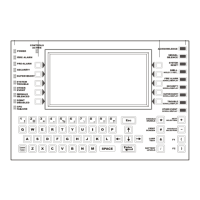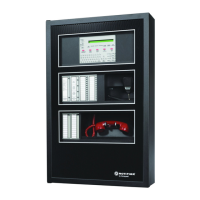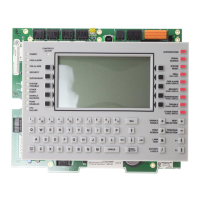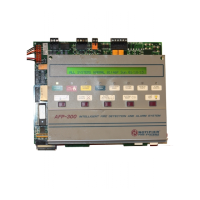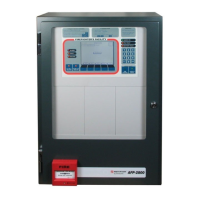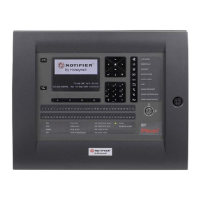NFS-320/E/C Installation Manual — P/N 52745:M2 7/1/14 51
Battery Checks and Maintenance Testing the System
.
• Return all circuits to their pretest condition.
• Check that all status LEDs are off and the green POWER LED is on.
• Notify fire, central station and/or building personnel when you finish testing the system.
5.4 Battery Checks and Maintenance
Maintenance-free sealed lead-acid batteries used in the system do not require the addition of water
or electrolyte. These batteries are charged and maintained in a fully charged state by the main
power supply’s charger during normal system operation. A discharged battery typically reaches the
voltage of 27.6 VDC within 48 hours; the charge rate depends on the battery size (2.0A for 18-
26AH; 5.0A-5.7A for 26AH-200AH).
Immediately replace a leaking or damaged battery. Batteries should be replaced in accordance with
the battery manufacturer’s recommendations.
• If a battery leaks and contact is made with the Sulfuric Acid, immediately flush skin and/or
eyes with water for at least 15 minutes. Water and household baking soda provides a good
neutralizing solution for Sulfuric Acid.
• If Sulfuric Acid gets into eyes, seek immediate medical attention.
• Ensure proper handling of the battery to prevent short circuits.
• Take care to avoid accidental shorting of the leads from uninsulated work benches, tools,
bracelets, rings, and coins.
NOTE: The battery test requires fully charged batteries. If batteries are new or discharged due
to a recent power outage, allow the batteries to charge for 48 hours before testing.
WARNING:
Batteries contain Sulfuric Acid which can cause severe burns to the skin and eyes and damage to
fabrics.
WARNING:
Shorting the battery leads can damage the battery, equipment, and could cause injury to personnel.
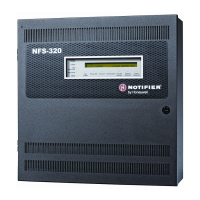
